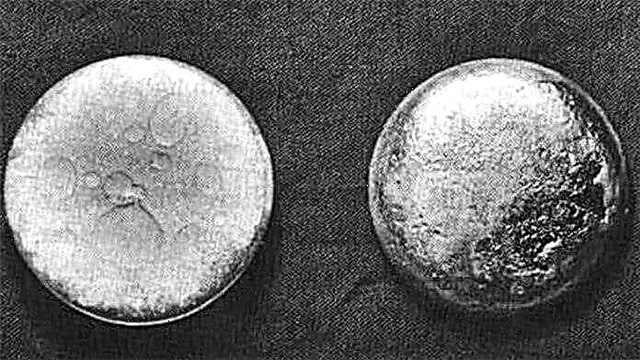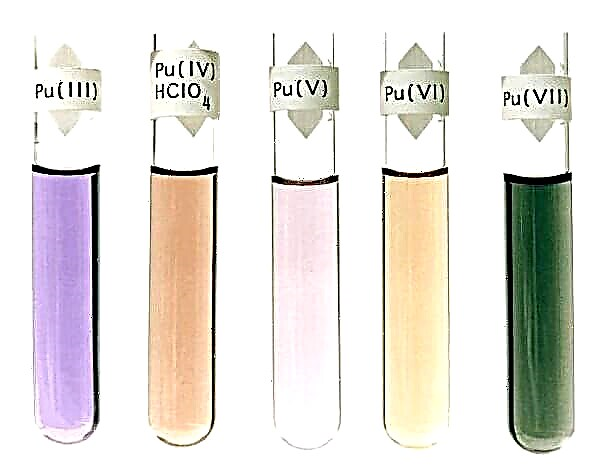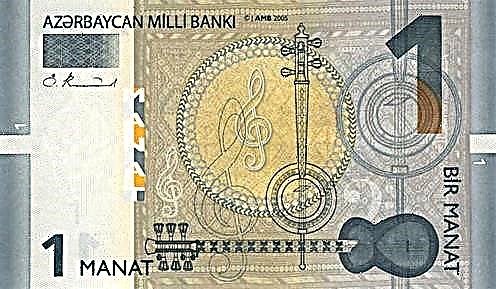We all love metals. Cars, bicycles, kitchen appliances, cans for drinks and many other things - they all consist of metal. Metal is the cornerstone of our lives. But sometimes it can be very difficult.
When we talk about the severity of this or that metal, we usually have its density in the form, that is, the ratio of mass to occupied volume.
Another way to measure the "weight" of metals is their relative atomic mass. The heaviest metals in terms of relative atomic mass are plutonium and uranium.
If you want to know which metal is the heaviestIf we consider its density, then we are happy to help you. Here are the top 10 most heavy metals on Earth with an indication of their density per cubic cm.
10. Tantalum - 16.67 g / cm³
 The tenth line in the ranking is bluish-gray, very hard metal with an ultra-high melting point. Despite its hardness, it is as plastic as gold.
The tenth line in the ranking is bluish-gray, very hard metal with an ultra-high melting point. Despite its hardness, it is as plastic as gold.
Tantalum is an important component in many modern technologies. In particular, it is used to produce capacitors that are used in computer technology and mobile phones.
9. Uranium - 19.05 g / cm³
 This is the heaviest element on Earth, given its atomic mass - 238.0289 g / mol. In its pure form, uranium is a silver-brown heavy metal that is almost twice as dense as lead.
This is the heaviest element on Earth, given its atomic mass - 238.0289 g / mol. In its pure form, uranium is a silver-brown heavy metal that is almost twice as dense as lead.
Like plutonium, uranium serves as an essential component for creating nuclear weapons.
8. Tungsten - 19.29 g / cm³
 It is considered one of the densest elements in the world. In addition to its exceptional properties (high thermal conductivity and electrical conductivity, very high resistance to acids and abrasion), tungsten also has three unique properties:
It is considered one of the densest elements in the world. In addition to its exceptional properties (high thermal conductivity and electrical conductivity, very high resistance to acids and abrasion), tungsten also has three unique properties:
- After carbon, it has the highest melting point - plus 3422 ° C. And its boiling point - plus 5555 ° C, this temperature is approximately comparable to the surface temperature of the Sun.
- It accompanies tin ores, however, it impedes the smelting of tin, converting it to foam slag. For this he got his name, which is translated from German as “wolf cream”.
- Tungsten has the lowest linear expansion coefficient when heated of all metals.
7. Gold - 19.29 g / cm³
 Since ancient times, people buy, sell and even kill for this precious metal. What people, whole countries are buying gold. The leader of the states with the largest gold reserves at the moment is America. And it is unlikely that the time will come when there will be no need for gold.
Since ancient times, people buy, sell and even kill for this precious metal. What people, whole countries are buying gold. The leader of the states with the largest gold reserves at the moment is America. And it is unlikely that the time will come when there will be no need for gold.
They say that money does not grow on trees, but gold grows! A small amount of gold can be found in the leaves of eucalyptus, if it is on gold-bearing soil.
6. Plutonium - 19.80 g / cm³
 The sixth heaviest metal in the world is one of the most needed components for the world's nuclear powers. And he is a real chameleon in the world of elements. Plutonium exhibits a colorful oxidation state in aqueous solutions, and their color varies from light purple and chocolate to light orange and green.
The sixth heaviest metal in the world is one of the most needed components for the world's nuclear powers. And he is a real chameleon in the world of elements. Plutonium exhibits a colorful oxidation state in aqueous solutions, and their color varies from light purple and chocolate to light orange and green.  Color depends on the oxidation state of plutonium and acid salts.
Color depends on the oxidation state of plutonium and acid salts.
5. Neptunium - 20.47 g / cm³
 This silver-shined metal, named after the planet Neptune, was discovered by chemist Edwin Macmillan and geochemist Philip Abelson in 1940. It is used to get the sixth number on our list, plutonium.
This silver-shined metal, named after the planet Neptune, was discovered by chemist Edwin Macmillan and geochemist Philip Abelson in 1940. It is used to get the sixth number on our list, plutonium.
4. Rhenium - 21.01 g / cm³
 The word "Rhenium" comes from the Latin Rhenus, which means "Rhine". It is easy to guess that this metal was discovered in Germany. The honor of his discovery belongs to the German chemists Ide and Walter Noddak. This is the last of the open elements that has a stable isotope.
The word "Rhenium" comes from the Latin Rhenus, which means "Rhine". It is easy to guess that this metal was discovered in Germany. The honor of his discovery belongs to the German chemists Ide and Walter Noddak. This is the last of the open elements that has a stable isotope.
Due to the very high melting point of rhenium (in the form of alloys with molybdenum, tungsten and other metals) it is used to create components of rocketry and aviation.
3. Platinum - 21.40 g / cm³
 One of the most precious metals on this list (except for Osmium and California-252) is used in a variety of fields - from jewelry to the chemical industry and space technology. In Russia, the leader in the production of platinum metal is MMC Norilsk Nickel. About 25 tons of platinum are mined per year in the country.
One of the most precious metals on this list (except for Osmium and California-252) is used in a variety of fields - from jewelry to the chemical industry and space technology. In Russia, the leader in the production of platinum metal is MMC Norilsk Nickel. About 25 tons of platinum are mined per year in the country.
2. Osmium - 22.61 g / cm³
 Brittle and extremely hard metal is rarely used in its pure form. It is mainly mixed with other dense metals, such as platinum, to create very complex and expensive surgical equipment.
Brittle and extremely hard metal is rarely used in its pure form. It is mainly mixed with other dense metals, such as platinum, to create very complex and expensive surgical equipment.
The name "osmium" comes from the ancient Greek word "smell". Upon dissolution of the alkaline alloy of osmiridium in the liquid, a sharp amber appears, similar to the smell of chlorine or decayed radish.
Both osmium and iridium (the first place in the ranking) weigh about twice as much lead (11.34 g / cm³).
1. Iridium - 22.65 g / cm³ - the heaviest metal
 This metal can rightfully claim the title of element with the highest density. However, disputes about which metal is heavier - iridium or osmium, are still underway. And the thing is that any impurity can reduce the density of these metals, and obtaining them in pure form is a very difficult task.
This metal can rightfully claim the title of element with the highest density. However, disputes about which metal is heavier - iridium or osmium, are still underway. And the thing is that any impurity can reduce the density of these metals, and obtaining them in pure form is a very difficult task.
The theoretical calculated density of iridium is 22.65 g / cm³. It is almost three times heavier than iron (7.8 g / cm³). And almost twice as heavy as the heaviest liquid metal is mercury (13.6 g / cm³).
 Like osmium, iridium was discovered by the English chemist Smithson Tennant in the early 19th century. It is curious that Tennant found iridium not at all purposefully, but by chance. It was found in the impurity remaining after the dissolution of platinum.
Like osmium, iridium was discovered by the English chemist Smithson Tennant in the early 19th century. It is curious that Tennant found iridium not at all purposefully, but by chance. It was found in the impurity remaining after the dissolution of platinum.
 Iridium is mainly used as a hardener of platinum alloys for equipment that must withstand high temperatures. It is processed from platinum ore and is a by-product of nickel mining.
Iridium is mainly used as a hardener of platinum alloys for equipment that must withstand high temperatures. It is processed from platinum ore and is a by-product of nickel mining.
The name "iridium" is translated from ancient Greek as "rainbow". This is due to the presence of salts of various colors in the metal.
The heaviest metal in the periodic table is very rare in terrestrial substances. Therefore, its high concentration in rock samples is a marker of their meteorite origin. About 10 thousand kilograms of iridium are mined worldwide per year. Its largest supplier is South Africa.












